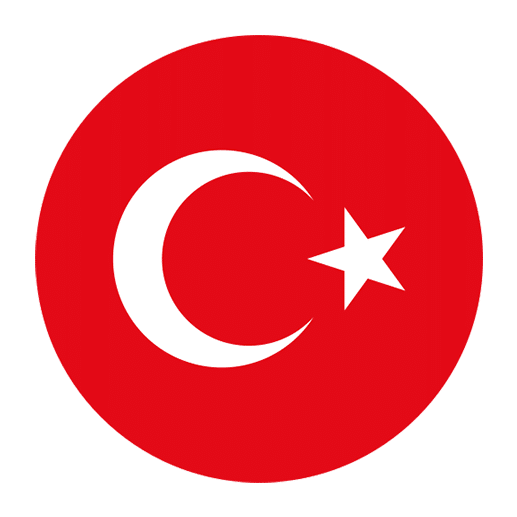Learning a new language is an exciting journey that opens up new cultural experiences and opportunities. Turkish, a language spoken by over 80 million people primarily in Turkey and Cyprus, is a rich and expressive language that can be incredibly rewarding to learn. One of the fundamental aspects of any language is understanding how to describe the world around us, and two essential categories for this are colors and shapes. This article aims to provide you with a comprehensive guide to common Turkish words for colors and shapes, helping you build a strong foundation in your Turkish language learning journey.
Colors in Turkish
Colors are among the first words we learn in any language because they are such an integral part of daily life. Whether you’re shopping for clothes, describing your favorite piece of art, or simply talking about the weather, knowing how to express colors is essential. Here are some of the most common colors in Turkish along with their English translations:
Basic Colors
– **Red**: Kırmızı
– **Blue**: Mavi
– **Green**: Yeşil
– **Yellow**: Sarı
– **Black**: Siyah
– **White**: Beyaz
– **Orange**: Turuncu
– **Purple**: Mor
– **Brown**: Kahverengi
– **Pink**: Pembe
– **Gray**: Gri
Examples in Sentences
To help you better understand how to use these color words in context, here are some example sentences:
– The sky is blue.
– Gökyüzü mavi.
– She wore a red dress.
– Kırmızı bir elbise giydi.
– The grass is green.
– Çimenler yeşil.
– I have a yellow bike.
– Sarı bir bisikletim var.
– The cat is black.
– Kedi siyah.
– This paper is white.
– Bu kağıt beyaz.
– I like orange juice.
– Turuncu suyu severim.
– The flower is purple.
– Çiçek mor.
– He has a brown dog.
– Kahverengi bir köpeği var.
– The room is pink.
– Oda pembe.
– The car is gray.
– Araba gri.
Additional Color Descriptors
In addition to the basic colors, you might find it useful to know some additional descriptors that can help you be more specific about shades and tints:
– **Light**: Açık
– **Dark**: Koyu
– **Bright**: Parlak
– **Pale**: Soluk
For example:
– Light blue: Açık mavi
– Dark green: Koyu yeşil
– Bright yellow: Parlak sarı
– Pale pink: Soluk pembe
Shapes in Turkish
Just like colors, shapes are fundamental descriptors that help us make sense of the world around us. Whether you’re learning geometry, describing objects, or giving directions, knowing the names of different shapes in Turkish is incredibly useful. Here are some of the most common shapes along with their English translations:
Basic Shapes
– **Circle**: Daire
– **Square**: Kare
– **Triangle**: Üçgen
– **Rectangle**: Dikdörtgen
– **Oval**: Oval
– **Star**: Yıldız
– **Heart**: Kalp
– **Diamond**: Elmas
– **Hexagon**: Altıgen
– **Pentagon**: Beşgen
Examples in Sentences
To help you understand how to use these words in context, here are some example sentences:
– The clock is a circle.
– Saat bir daire.
– The window is square.
– Pencere kare.
– The roof is a triangle.
– Çatı bir üçgen.
– The table is rectangular.
– Masa dikdörtgen.
– The mirror is oval.
– Ayna oval.
– The star is shining.
– Yıldız parlıyor.
– He gave her a heart-shaped necklace.
– Ona kalp şeklinde bir kolye verdi.
– She has a diamond ring.
– Elmas bir yüzüğü var.
– The honeycomb is hexagonal.
– Petek altıgen.
– The building is pentagonal.
– Bina beşgen.
Combining Colors and Shapes
Now that you know the basic words for colors and shapes, you can start combining them to describe objects more precisely. Here are some examples:
– A red circle
– Kırmızı bir daire
– A blue square
– Mavi bir kare
– A green triangle
– Yeşil bir üçgen
– A yellow rectangle
– Sarı bir dikdörtgen
– A pink heart
– Pembe bir kalp
Practice and Application
One of the best ways to learn and remember new vocabulary is through practice and application. Here are a few tips to help you integrate these new words into your everyday life:
Labeling Objects
One effective method is to label objects around your home with their corresponding Turkish names. For example, you can label a blue book as “mavi kitap” or a round table as “daire masa.” This constant exposure will help reinforce your memory.
Flashcards
Create flashcards with the Turkish word on one side and the English translation on the other. Practice these flashcards daily until you feel confident with the vocabulary.
Language Exchange
Find a language exchange partner who is a native Turkish speaker. Practice describing objects around you using the colors and shapes you’ve learned. This not only helps with vocabulary but also improves your pronunciation and speaking skills.
Online Resources
Utilize online resources such as language learning apps, websites, and forums. Many of these platforms offer interactive exercises and quizzes that can help you practice colors and shapes in Turkish.
Conclusion
Mastering the vocabulary for colors and shapes in Turkish is a significant step towards achieving fluency. These basic yet essential words will enable you to describe the world around you more vividly and accurately. Remember, the key to language learning is consistent practice and exposure. So, keep using these words in your daily conversations, and soon enough, you’ll find yourself thinking in Turkish!
We hope this guide has been helpful in your Turkish language learning journey. Happy learning!

